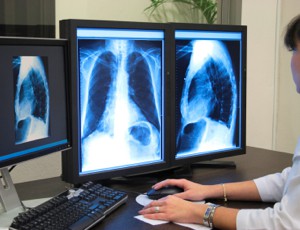Role of the aortic valve in defining the superior vena cava-right atrium junction

The aortic valve (AV) has been used as a surrogate marker for the superior vena cava-right atrium (SVC-RA) junction during the placement of central venous catheters” Hinton et al (2019). Abstract: INTRODUCTION: The aortic valve (AV) has been used as a surrogate marker for the superior vena cava-right atrium (SVC-RA) junction during the placement of […]
Distal end of the CVC damaged due to radiofrequency energy

We present a patient who underwent mitral valve replacement (MVR) and a concomitant CM-IV procedure in which the distal end of the CVC was damaged due to RF energy” de Rooij et al (2019). Extract: “About 12% of patients undergoing cardiac surgery and 30% of patients undergoing mitral valve surgery experience atrial fibrillation (AF).1 The […]
How to deliver central line care education at the point of care?

After a survey revealed practice gaps in central venous catheter care, one organization was challenged to identify a novel approach to educate nurses” Van Ryan et al (2019). Abstract: After a survey revealed practice gaps in central venous catheter care, one organization was challenged to identify a novel approach to educate nurses. Through a search […]
Improved central line catheter care in a pediatric cardiac intensive care unit

This article illustrates how a multidisciplinary collaboration and the use of scientific evaluation and implementation tools can facilitate a decrease in CLABSIs” Thornton et al (2019). Abstract: Central line-associated bloodstream infection (CLABSI) can result in increased length of hospital stay and increased costs for both patients and organizations. This article illustrates how a multidisciplinary collaboration […]
Effectiveness of the K-Card process for central venous catheter maintenance bundle

The purpose of this study was to evaluate the effectiveness of the K-Card process for central venous line (CVL) maintenance bundle compliance in a pediatric intensive care unit” Frith et al (2019). Abstract: BACKGROUND: The Kamishibai Card (K-Card) process is a storytelling methodology designed to help identify barriers and remove or redesign them. PURPOSE: The […]
Spinal infections among patients with long-term central venous catheters

Spinal infections are a rare yet serious metastatic complication of bacteremia among patients with long-term central venous catheters (CVCs) for which clinicians must remain vigilant” Topan et al (2017). Abstract: Spinal infections are a rare yet serious metastatic complication of bacteremia among patients with long-term central venous catheters (CVCs) for which clinicians must remain vigilant. […]
Evidence-based practice regarding pediatric central venous catheters

This article highlights the key considerations, pitfalls and evidence-based practices regarding the use pediatric central venous catheters” Jamshidi (2019). Abstract: Central venous catheters (CVC) are commonplace in the management of critically ill patients and serve a variety of purposes. Venous access is important for the administration of fluid and medications as well as blood procurement […]
ECG method for confirming central venous catheter tip placement

The objective of this study is to compare the accurate placement of the CVC tip using anatomical landmark technique with ECG-guided technique” Krishnan et al (2018). Abstract: BACKGROUND: The current standard followed for assessing central venous catheter (CVC) tip placement location is through radiological confirmation using chest X-ray (CXR). Placement of CVCs under electrocardiogram (ECG) […]
Surgical treatment of patients with superior vena cava syndrome

Presented herein are two clinical case reports concerning surgical treatment for superior vena cava syndrome in patients suffering from end-stage renal disease and undergoing programmed haemodialysis” Maksimov et al (2018). Abstract: Presented herein are two clinical case reports concerning surgical treatment for superior vena cava syndrome in patients suffering from end-stage renal disease and undergoing […]
Ultrasound peripheral IV catheter insertion reduces central line placement

Our primary objective was to determine the proportion of patients that required CVC after USPIV. Our secondary objective was to determine if classic risk factors for difficult vascular access were predictive of future CVC placement” Pare et al (2018). Abstract: Objectives: Ultrasound guided peripheral intravenous catheters (USPIV) are frequently utilized in the Emergency Department (ED) […]
Central line related complications in pediatric oncology patients

Central venous access device (CVAD)-related complications are associated with high morbidity rates. This study was performed to underline the importance of CVAD-complication prevention and treatment” van den Bosch, et al (2018). Abstract: BACKGROUND: Central venous access device (CVAD)-related complications are associated with high morbidity rates. This study was performed to underline the importance of CVAD-complication […]
Point of care ultrasound in localizing central venous line tip position

The primary objective was to study agreement between X-rays and point of care ultrasound (POC-US) in determining central venous line (CVL) tip position” Zaghloul et al (2018). Abstract: The primary objective was to study agreement between X-rays and point of care ultrasound (POC-US) in determining central venous line (CVL) tip position. The secondary objective was […]
Central line maintenance bundle for dislodgement and infection prevention

Although research has shown frequent, scheduled dressing changes using the chlorhexidine patch decreases infection rates, the risk of dislodgement and skin breakdown for NICU infants outweighs the potential benefit of decreased infection” Short (2018). Abstract: BACKGROUND: Infants in the newborn intensive care unit (NICU) often receive medications or nutritional support for extended periods. Due to […]
Central venous catheter tip location confirmed with agitated saline bubble-enhanced ultrasound

Dynamic ultrasound-based visualization of microbubbles in the right atrium is a highly accurate method to detect percutaneous implantation of large-lumen, tunneled, central venous catheters without the need for fluoroscopic guidance technology” Passos et al (2018). Abstract: BACKGROUND: In patients with end-stage renal disease, the use of cuffed, tunneled dialysis catheters for hemodialysis has become integral […]
ASPEN guidelines for the selection and care of CVAD

This document represents the American Society for Parenteral and Enteral Nutrition (ASPEN) clinical guidelines to describe best practices in the selection and care of central venous access devices (CVADs) for the infusion of home parenteral nutrition (HPN) admixtures in adult patients” Kovacevich et al (2018). Abstract: This document represents the American Society for Parenteral and […]
Interventions to reduce unnecessary central venous catheter use

To identify, describe, and evaluate interventions to reduce unnecessary central venous catheter (CVC) use to prevent central-line-associated bloodstream infections (CLABSIs) in adults” Xiong and Chen (2018). Abstract: OBJECTIVE: To identify, describe, and evaluate interventions to reduce unnecessary central venous catheter (CVC) use to prevent central-line-associated bloodstream infections (CLABSIs) in adults. DESIGN: Systematic review. METHODS: The […]
Central venous catheter placement in a persistent left-sided superior vena cava

This case report describes placement of a dialysis catheter in a 55-year-old patient with PLSVC and subsequent complications following the uncertainty of the placement” Bak and Nørskov (2018). Abstract: Persistent left-sided superior vena cava (PLSVC) is a central venous anomaly in up to 0.5% of the population. It is usually asymptomatic due to drainage into […]
Study represents largest analysis of ultrasound-guided access for children

This study represents the largest analysis of ultrasound-guided access for children. A complete practice transition to the ultrasound-guided approach was feasible within a two-year period” Criss et al (2018). Abstract: BACKGROUND: Use of ultrasound-guidance for central venous access in adults is the standard of care. There is, however, less clarity in the role of routine […]
Association of infections with the use of central venous catheters

The goal of this study was to identify the occurrence of secondary infection due to the use of temporary double-lumen catheters for hemodialysis in 96 patients with acute kidney injury or acute chronic kidney disease” Ferreira et al (2018). Abstract: The goal of this study was to identify the occurrence of secondary infection due to […]
Septic shock related to central venous catheter infection results in fatal outcome

Catheter-related blood stream infection (CRBSI) is one of the most common intractable healthcare-associated infections because catheters can be easily contaminated by resistant bacteria, and is associated with a high mortality” Arai et al (2018). Abstract: BACKGROUND: Catheter-related blood stream infection (CRBSI) is one of the most common intractable healthcare-associated infections because catheters can be easily […]
Impact of ultrasound guided-central venous access training on CLABSI rates

To address this limitation, we designed and conducted a standardized training course and a performance-based competency examination for all residents at a single institution and assessed the impact on the resident CLABSI rate” Lyon et al (2018). Extract: “Prior research has examined methods and processes for the teaching of ultrasound-guided central venous access (USGVA). None […]
Cuffed-tunnelled central venous catheter insertion in pediatric patients

To summarize the characteristics of cuffed-tunneled catheters insertion and investigate the values of cuffed-tunneled catheters in pediatric patients” Wang et al (2018). Abstract: Objective: To summarize the characteristics of cuffed-tunneled catheters insertion and investigate the values of cuffed-tunneled catheters in pediatric patients. Methods: Between March 2015 and July 2017, all the pediatric patients who received […]
Extensive overview of central venous access device complications

Central venous catheterization is a skill frequently needed in the acute care setting. Patients who have multiple, noncompatible intravenous (IV) medications with limited peripheral access, or who are being given vasoactive or phlebosclerotic agents may not be suitably cared for with a peripheral IV alone” England and Bhimji (2018). Excerpt: Central venous catheterization is a […]
Air embolism following removal of central venous catheter

We report a case of cerebral air embolism with loss of consciousness after removal of CVC caused by pulmonary arteriovenous malformation (PAVM)” Kugiyama et al (2018). Abstract: Cerebral air embolism following central venous catheter (CVC) removal is extremely rare. We report a case of cerebral air embolism with loss of consciousness after removal of CVC […]
Narrative review of long-term central venous access devices for the intensivist

Long-term central venous access devices are increasingly prevalent and consequently often encountered by intensivists” Moir and Bodenham (2018). Abstract: Long-term central venous access devices are increasingly prevalent and consequently often encountered by intensivists. This review introduces the different types of long-term central venous access devices, outlines their potential utility, examines potential complications associated with their […]
How does hypovolemia change the size of the jugular vein in adult patients

The present study is aimed at establishing the values of internal jugular vein (IJV) anterior-posterior and medial-lateral sizes in patients with hypovolemia” Urakov et al (2018). Abstract: The present study is aimed at establishing the values of internal jugular vein (IJV) anterior-posterior and medial-lateral sizes in patients with hypovolemia. A total of 25 adult Intensive […]
Hemodialysis catheters in patients with bilateral internal jugular vein occlusion

This a prospective cross-sectional follow-up study of the alternative approaches for placement of cuffed hemodialysis catheters in end-stage renal disease patients with bilateral internal jugular vein occlusion from the interventional nephrology point of view” Gouda et al (2018). Abstract: INTRODUCTION: Internal jugular vein occlusion often makes necessary the use of less desirable routes as external […]
Mid-thigh femoral central venous catheter placement case studies

An alternative location was selected for the insertion of a femoral vein central venous catheter in the midthigh to reduce the risk of infection” Ostroff and Moureau (2018). Abstract: Background: Bedside vascular access options have been limited to the short peripheral intravenous, midline catheter, peripherally inserted central catheter, and central venous catheter (CVC) insertion sites […]
Rates of central line-associated blood stream infection and venous thromboembolism

The purpose of our study is to compare the rate of central line-associated blood stream infections and venous thromboembolism in central venous catheters versus peripherally inserted central catheters in hospitalized children” Noonan et al (2018). Abstract: OBJECTIVES: The purpose of our study is to compare the rate of central line-associated blood stream infections and venous […]
Knowledge of central line catheter care provided to oncology patients

The aim of the present study was to assess the oncology nurses’ knowledge about central line catheters and their care, complications, and applications” Abu Sharour (2018). Abstract: The aim of the present study was to assess the oncology nurses’ knowledge about central line catheters and their care, complications, and applications. A descriptive cross-sectional design was […]

